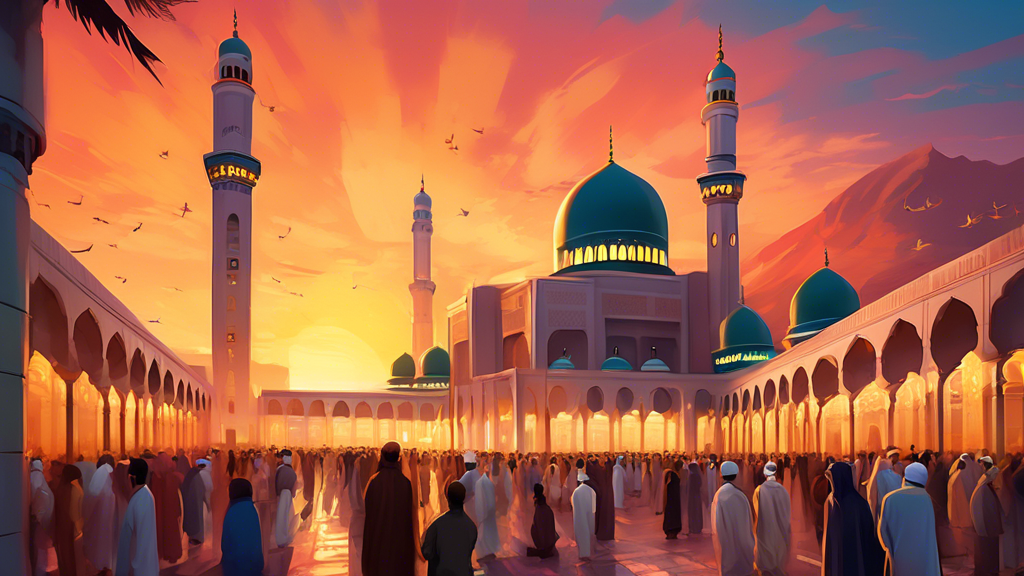Introduction to Masjid-e-Nabvi
Masjid-e-Nabvi, also known as the Prophet’s Mosque, is one of the holiest sites in Islam. Located in Medina, Saudi Arabia, it was originally established by the Prophet Muhammad himself, shortly after his migration (Hijrah) to Medina in 622 AD. This mosque not only serves as a place of worship but also as a community center, a place of learning, and a historically significant monument that has seen numerous expansions and renovations throughout Islamic history.
Historical Context and Significance
The historical significance of Masjid-e-Nabvi is profound. Upon arriving in Medina, one of the first acts of the Prophet Muhammad was to build this mosque, which served as a spiritual center for the new Muslim community. The mosque was constructed adjacent to his house, linking his personal life to the communal activities of worship. This establishment marked a key turning point in Islamic history – the creation of a socio-political entity underpinned by Islamic principles.
Architectural Development Through the Ages
Masjid-e-Nabvi has undergone numerous expansions and architectural transformations since its inception. Originally, it was a modest structure with palm trunks for pillars and branches for a roof. Over the centuries, succeeding Muslim rulers expanded and beautified the mosque, adding domes, minarets, and increasingly sophisticated architectural features. The most notable expansions occurred during the reigns of the Umayyad Caliph Al-Walid I and later during the Ottoman Empire. Today, the mosque encompasses a vast area with modern facilities while still retaining a deep connection to its historical roots.
Spiritual Importance in Islamic Tradition
The spiritual importance of Masjid-e-Nabvi is second only to Masjid al-Haram in Mecca. It is considered the second holiest site in Islam. Muslims believe that prayers offered here bring immense rewards. Prophet Muhammad stated that a prayer in his mosque is better than a thousand prayers offered in any other mosque except Masjid al-Haram. Furthermore, Masjid-e-Nabvi is the final resting place of the Prophet Muhammad, making it a highly revered site for pilgrimage and reflection.
The Green Dome and the Rawdah
One of the most iconic features of Masjid-e-Nabvi is the Green Dome, under which lies the tomb of the Prophet Muhammad. Adjacent to the tomb is the Rawdah, which refers to a garden from paradise. According to numerous Hadiths, the Rawdah is one of the gardens from paradise. Pilgrims and visitors strive to offer prayers in the Rawdah due to its sanctity and the belief in the high merit of such prayers.
Cultural and Community Role
Beyond its religious and historical significance, Masjid-e-Nabvi plays a vital role in the cultural and community life of Muslims. The mosque serves as a gathering place for learning, with numerous circles of knowledge where scholars teach Hadiths, Fiqh, Quranic interpretation, and Islamic theology. Throughout history, the mosque has been a center for significant religious schooling and scholarly activity, influencing Islamic thought and practice significantly.
Educational and Social Impact
The mosque’s impact extends beyond spiritual nourishment; it has historically functioned as a social welfare center. In the past, it was a place where the needy could find support and where community issues were addressed and resolved. This role continues today with the mosque hosting lectures, seminars, and welfare activities that reflect the mosque’s role in addressing the needs of the Muslim community.
Conclusion
Masjid-e-Nabvi holds a multifaceted significance within the Islamic tradition, embodying spiritual, historical, cultural, and educational dimensions. As a monument, it connects Muslims to their religious heritage and identity. As a center of Islam, it plays a crucial role in the spiritual lives of believers, offering them a place for heightened worship and proximity to their Prophet. The continued reverence and maintenance of Masjid-e-Nabvi underscore its enduring importance and the deep affection Muslims around the world hold for this sacred site.
